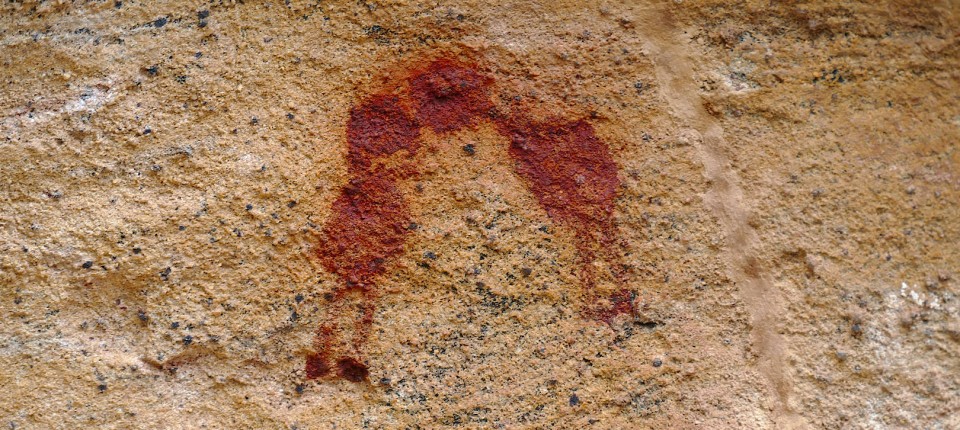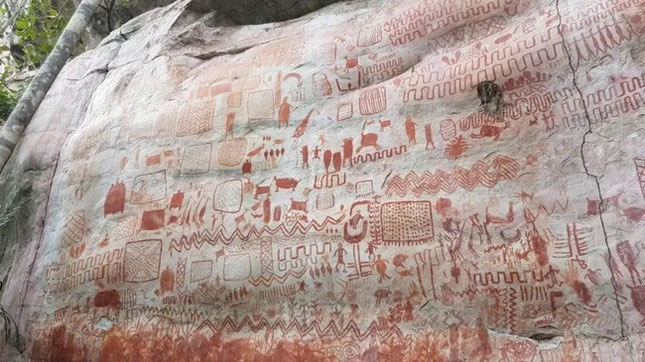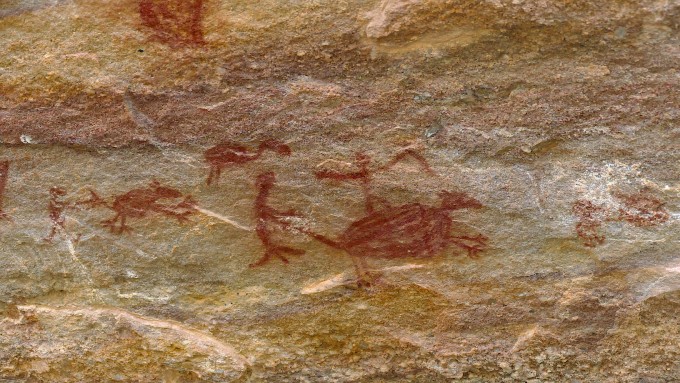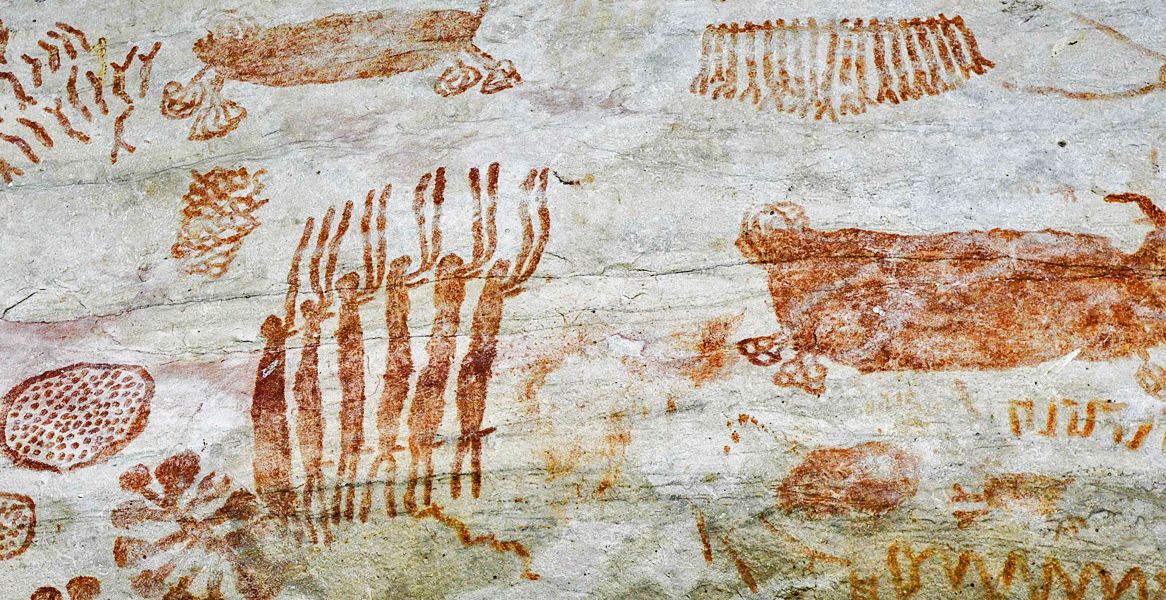Researchers have discovered that the first humans to settle in the Amazon basin arrived around 13,000 years ago in a rapid mass migration that swept across the Americas.

After arriving at what is now Serranía de la Lindosa , an archaeological site on the northern edge of the Colombian Amazon, these first Americans lived in rock shelters, making tools with rocks, hunted, gathered, and created massive works of rock art , according to a new study published in the March issue of the journal Science.
 Rock art found at Serranía de la Lindosa, an archaeological site on the northern edge of the Colombian Amazon. (Photo: University of Exeter).
Rock art found at Serranía de la Lindosa, an archaeological site on the northern edge of the Colombian Amazon. (Photo: University of Exeter).
Although it was previously known that the area had been occupied by humans at least 12,600 years ago, the evidence is in rock art. Researchers were able to better understand how the area was used.
“The people of South America represent one of the great migrations in human history – but their arrival in the Amazon is still poorly understood,” said Mark Robinson, associate professor of archeology at the University of Exeter in the UK. clearly. For researchers working in the field, dense rainforest makes field identification difficult. Furthermore, acidic, clay soils reduce the ability to preserve organic remains. However, our recent excavations provide a good understanding of the site, not just its age. much earlier than previously understood, and provides new insights into their lives and historical trajectory during the Holocene, the epoch after the last ice age that began 11,700 years ago.”
For the new study, archaeologists collected soil samples from two rock shelters in the area. According to the statement, the team analyzed the stratigraphy or layers of the sediment and found different layers containing rock fragments, charcoal and high levels of organic matter indicating preparation, consumption and disposal food,
Analysis shows there were periods when the shelters were completely abandoned – in some cases for more than a millennium at a time. According to the study, underground, researchers discovered 3,000-year-old pottery, 2,500-year-old evidence of soil cultivation, and 500-year-old traces of corn. The analysis also revealed how early the sites were in use.

José Iriarte, professor of archeology at the University of Exeter, said: “The results confirm that human occupation of Serranía La Lindosa began at the end of the Pleistocene, around 12,600 years ago, and continued until the 1900s. 17th century. Rock shelters found in the area show evidence of human habitation in the area, an attractive landscape for foraging groups”.

There, he added, they had access to lush tropical forests, savannas and rivers for hunting and gathering.
In addition to soil samples, archaeologists also unearthed animal bones, plant remains, and ocher for analysis in future studies.





